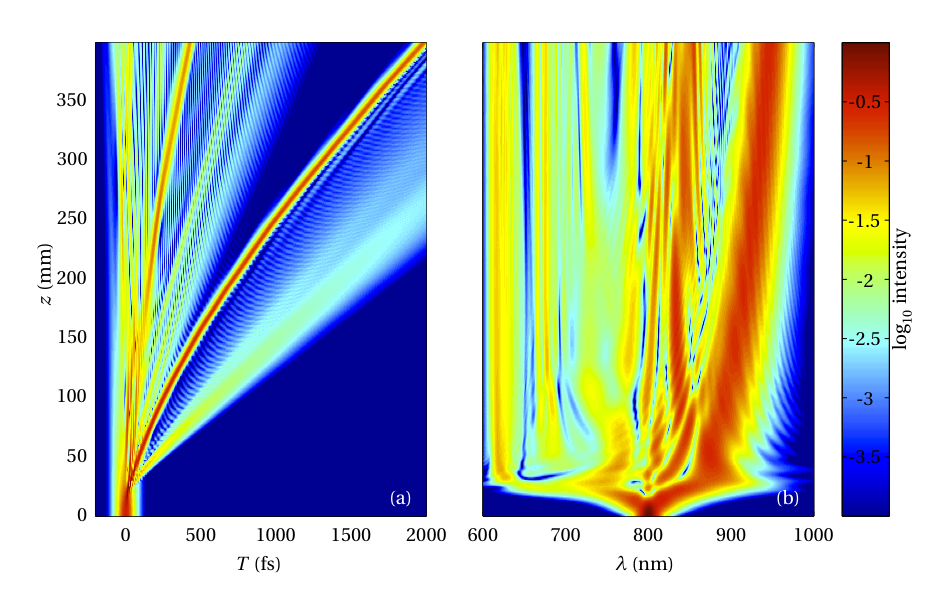Supercontinuum geneation
Introduction
Supercontintinuum generation is the dramatic spectral broadening of laser pulses. The result is brilliant white light with the bandwidth of a incandescent lamp but the coherence of a laser. It occurs when nonlinear effects, particularly those arising from the intensity-dependence of the refractive index in many common materials, combine with linear effects such as the dependence of the velocity of light upon its wavelength.
The following animation gives a sense of the processes involved in supercontinuum generation in a photonic crystal fibre Dudley-2006-Supercontinuum. The color plot shows the spectrogram, a representation of the energy of the laser pulse in the two-dimensional time-frequency domain. The plots on either side show the temporal and spectral distributions individually. One can observe the pulse undergoing rapid initial spectral broadening and temporal compression before splitting into a number of sub-pulses.
The nonlinear wavenumber: a intuitive interpretation of dynamical phase-matching
For energy to be transferred from one oscillatory to another, the another, the two processes must vary at the same rate. This is called phase matching, and it is useful in understanding many aspects of the otherwise complex properties of supercontinuum generation. In particular, in the very common case of supercontinuum generation inside a photonic crystal fibre pumped by a femtosecond Ti:Sapphire oscillator, phase matching between the intense pump pulse and weak background radiation plays the dominant role in determining the short wavelength edge of the spectrum. However, the phase matching is dynamic - the pump is evolving during the energy transfer. This makes interpretation of the the phase matching more challenging.
With C. Martijn de Sterke, Benjamin J. Eggleton at CUDOS, Sydney and Thomas G. Brown at the Institute of Optics, Rochester, I performed a numerical study of the energy transfer process between the pump and the background radiation during supercontinuum generation in photonic crystal fibres. We found that despite the highly dynamical state of the pump pulse during the period of rapid growth of the blue-shifted radiation, its phase-matching behavior was nonetheless similar to that of a fundamental solition - a pulse which does not change shape during propagation.
